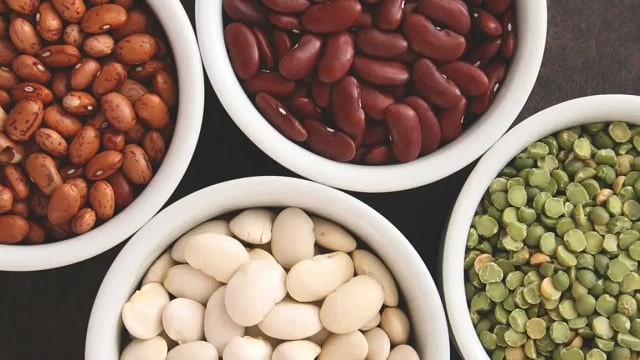In this article, we explain how much raw legumes weigh once cooked, what causes the change and how cooking affects different legumes, also on a nutritional level.
When cooking legumes such as lentils, chickpeas or beans, there is a significant increase in volume and weight. It is important to understand the relationship and equivalence between the weight of raw or cooked legumes since both formats are sold and used equally in recipes. If we are short on time, it may be advisable to use cooked legumes in a glass jar (in which case it is useful to know the equivalence if a recipe calls for raw ones); If money is scarce, we can opt for the raw ones, which are much cheaper. This detail, the correct calculation of legumes depending on whether they are dried or cooked, can significantly affect the portions of our recipes. Knowing this relationship will allow us to plan our recipes more precisely and better control the quantities we serve. To give you an idea, the recommended serving per person of cooked canned legumes is between 150 to 200 g. On the other hand, if we opt for raw legumes, the recommended weight is 80 g per person.
Why cooked legumes weigh more than raw ones
There is a main reason why cooked legumes weigh more than dried ones, the rehydration process, but it is also necessary to take into account the fiber and starch content of different legumes.
Cooked legumes contain water
The main reason why cooked legumes weigh more than raw ones is very simple: cooked legumes contain water that they absorb little by little during the rehydration and cooking process. When soaking or cooking legumes they absorb water, increasing their volume and also their weight.
The fiber softens and expands
Another reason behind this weight gain is related to the fiber in legumes. When dry, this fiber is hard, but when it comes into contact with water and is cooked it softens and expands, which also influences the weight.
Starch gels
Finally, it is necessary to talk about the gelation of starch, also present in legumes. When starch is cooked and subjected to high temperatures, it absorbs water, also resulting in an increase in volume and weight.
How much do raw legumes weigh once cooked?
Depending on the type of legume, the weight may vary, since lentils do not absorb the same amount of water as chickpeas or beans. However, in general, legumes tend to increase approximately 2 to 3 times their raw weight. To see the difference we will make a comparison with 3 of the most common legumes that we use for our stews.
Chickpeas: triple their weight once cooked
Although when it comes to chickpeas, the increase in volume may vary depending on the specific type of chickpea, we can say that it is one of the legumes that increases its volume the most, since after cooking it can triple its weight. We must take this factor into account when calculating portions per person.
Lentils: they double their weight once cooked
As with chickpeas, depending on the type of lentil, they will absorb more or less water during cooking. Larger lentils will absorb more liquid during cooking, considerably increasing their volume, unlike smaller lentils that will absorb less water. In any case, in general, lentils will double their weight when cooked.
Beans: triple their weight once cooked
As for beans, it happens in a similar way as with the rest of the legumes. If they are larger, they will absorb more water during cooking, increasing both their weight and volume. Generally, when we cook beans, they triple their weight .
Nutritional values of cooked legumes
As with certain foods, the nutritional values of legumes can be affected after cooking. When cooking legumes, some of the proteins, vitamins, and minerals are released into the cooking liquid during the cooking process. This makes the broth richer in nutrients but slightly reduces the nutritional value of the legumes.
Regarding calories, you should know that they do not change with cooking, they will only increase if we cook the legumes with some fatty elements. It is not the same to eat some lentils, chickpeas or cooked widowed soybeans or in a salad as to use them in a stew along with bacon, chorizo, and blood sausage.
Tips for cooking legumes
The key to cooking legumes and making them perfect is to soak them first. To do this, it will be enough to soak them the night before in a container. Another thing you should do is rinse them before using them to remove any impurities. Start by cooking the legumes over high heat and then lower the temperature to maintain a constant boil, although it will depend on the instructions on the package. Make sure at all times that they do not run out of water or broth during cooking and remove the foam from the surface that forms at the beginning of cooking with a slotted spoon. Leave the pot half covered. Be very careful when stirring the pot to avoid breaking the legumes once cooked and add salt only at the end of cooking.
In addition to consuming them stewed, legumes can be cooked in various ways so that we never get tired and try them in very original ways. To do this, we propose the best legume recipes, a selection of different recipes where legumes are the protagonists.
